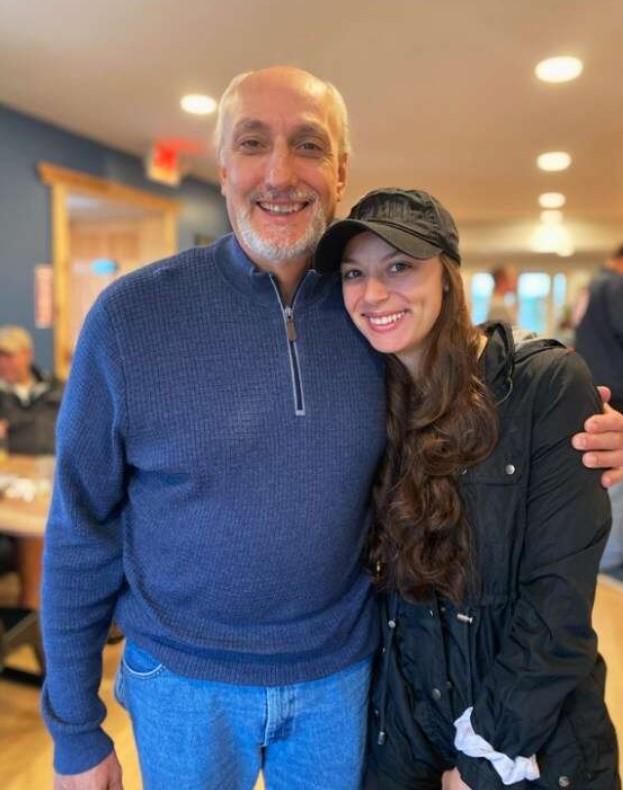
In an extraordinary turn of events, John Wishman, diagnosed with the deadliest brain cancer, glioblastoma, in 2020, defies odds and continues to embrace life, thanks to an experimental vaccine. The vaccine, SurVaxM, designed to delay tumor progression by targeting a protein called survivin, offers a glimmer of hope for glioblastoma patients who face a grim prognosis. Wishman’s story sheds light on the potential of this vaccine that aims to combat one of the most lethal and treatment-resistant cancers.
“Survivin is the key,” explains Wishman, attributing his extended survival to the innovative vaccine. By targeting survivin, which is believed to sustain cancer cellsx`, the vaccine aims to eliminate their lifeline and prompt their demise. However, the concept of a vaccine effectively delaying the return of glioblastoma, a devastating cancer with a mere 6.8% five-year survival rate, may seem like an implausible dream.
Wishman had the privilege of receiving the experimental vaccine through an expanded access program, granting seriously ill patients access to promising treatments. His daughter, Lydia, a nurse at the Roswell Park Comprehensive Cancer Center, facilitated his participation in the study. Early clinical trials showcased the vaccine’s potential by extending the average survival time to 26 months for glioblastoma patients. Buoyed by these findings, the drug manufacturer, MimiVax, based in New York, now seeks to confirm these results through a larger trial involving over 270 patients across multiple sites in the United States and China. Unfortunately, the expanded access program is no longer available.
Tracey Kassman, a participant in the trial, shares her experience as she battles glioblastoma. Enrolled just months after her diagnosis, Kassman receives regular shots of the vaccine, unsure if she’s receiving the vaccine or a placebo due to the trial’s randomized and double-blinded nature. With each MRI scan preceding her shots, Kassman admits the process requires a leap of faith, as the uncertainty looms over her. Nonetheless, she perseveres, hoping that the vaccine will offer her a chance at life.
Glioblastoma’s resistance to treatment stems from its aggressive nature, rapidly spreading and infiltrating surrounding areas of the brain and spinal cord. Complete surgical removal of the tumor remains nearly impossible due to its tentacle-like reach. Traditional treatment involves a combination of surgery, chemotherapy, and radiation, but recurrence remains a significant challenge. SurVaxM presents an innovative approach by training the immune system to target and destroy cancer cells, preventing the formation of new tumors.
Medical professionals, like Dr. Robert Fenstermaker from the Roswell Park Comprehensive Cancer Center, acknowledge the promise of SurVaxM, noting the rejuvenation of the immune system during the radiation phase as a critical opportunity for vaccination. Administered as a routine shot in the arm, the vaccine comprises four doses over two months, followed by booster doses every two months. Regular brain scans monitor participants for any signs of tumor progression.
While SurVaxM represents a new frontier in the fight against glioblastoma, it is not the first attempt to develop a vaccine targeting survivin. Previous endeavors have not progressed to mid- to late-stage clinical trials. However, medical experts like Dr. Alyx Porter from the Mayo Clinic recognize the distinct approach of SurVaxM and its potential to overcome the blood-brain barrier, which impedes the effectiveness of other treatments.
Despite the encouraging progress, the road ahead remains arduous. MimiVax anticipates the earliest results from the Phase 2b trial by mid-2024, with completion of the trial expected in the following 18 to 24 months. Success would necessitate a larger Phase 3 clinical trial. Nevertheless, the urgency to combat glioblastoma’s high mortality rates compels researchers to explore immunotherapy’s potential.
Fenstermaker assures the safety of the SurVaxM vaccine, with known side effects such as fever, itching, redness, and muscle aches. The drug manufacturer also expresses interest in utilizing the vaccine for other cancer types, including multiple myeloma and neuroendocrine tumors.
For Kassman, every moment counts, and she considers herself fortunate for the opportunity to participate in the trial. Emphasizing the importance of timely action, she acknowledges that delaying her decision could have had dire consequences. Her story, along with Wishman’s, serves as a beacon of hope in the ongoing quest for effective treatments against glioblastoma.


